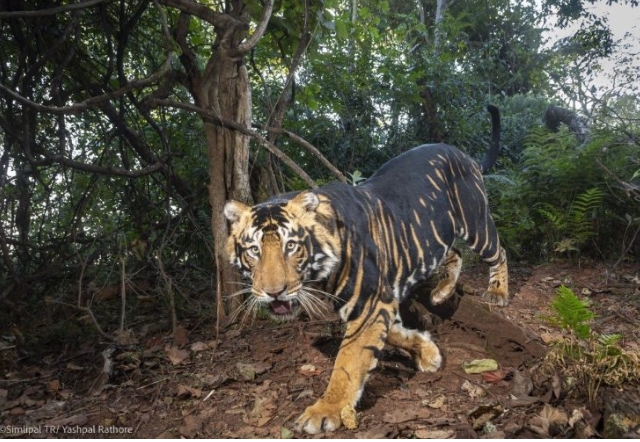Similipal tiger population likely to exceed 60 by 2030

Baripada: Buoyed by factors indicating an increase in the Royal Bengal Tiger (RBT) population in the Similipal Tiger Reserve (STR) in Mayurbhanj district, Forest department officials and experts estimate that big cat count in the reserve would exceed 60 by 2030.
Factors indicating the growing count of tigers in the reserve include the active marking and movement of the cats in the core area and an increase in incidents of them preying on livestock in the peripheral villages, officials said.
According to a state government survey, Similipal sanctuary currently houses the highest number of RBTs in Odisha. Out of the 30 tigers in the state, 27 are found in Similipal, including 14 females, and 13 males (and 12 cubs). The National Tiger Conservation Authority (NTCA) has recognised Similipal as a crucial region for tiger breeding, and conservation efforts are accelerating.
Recently, a melanistic tiger was spotted roaming in the Talabandh Range of the North Division of the tiger reserve. The big cat reportedly preyed on more than 10 cattle in four different locations, creating panic among people in nearby villages, including the Nedam area under the Sorishapal Panchayat.
Tiger census data from the NTCA shows a steady rise in numbers. In 2014, only four tigers were recorded in the reserve, including three females and one melanistic tiger. By 2018, the count increased to eight, and in 2022, it doubled to 16. The latest 2024 survey by the state government recorded 27 tigers. Forest officials said if the present trend continues, their numbers will reach 40 by 2026, and potentially 60–70 by 2030.
Dr Prakash Chand Gogineni, Regional Chief Wildlife Warden and Field Director STR explained that the two tiger reserve projects (north and south divisions) in the park cover a total of 1,200 square kilometres. “Each 100 sq km can accommodate about fi ve tigers. Therefore, we estimate at least 60 tigers can be accommodated within the reserve,” he said.
While the increase in tiger population has come as a positive development, it has also led to more instances of human-wildlife conflicts. In 2018, no incidents of cattle predation had been reported. But of late, over hundred of such cases have been reported.
Experts said that the tigers are expanding their territory between the core and buffer zones in search of suitable habitats and prey. Conservation measures such as maintaining a peaceful and undisturbed environment, ensuring sufficient prey availability, and preventing poaching are essential for sustaining this growth, they added.
To curb poaching activities, 150 AI-powered cameras have been installed in the park, and intensive patrolling initiated. Wildlife experts believe cattle predation is a sign of a growing tiger population.
Bhanu Mitra Acharya, an independent director at the Odisha State Forest Development Corporation, noted that elderly tigers, unable to hunt efficiently, often target domestic animals. He cautioned against retaliatory poisoning by villagers, which had been a concern in the past.
The increase in Similipal’s tiger population is a significant achievement for Odisha. However, ensuring long-term conservation requires continued vigilance, habitat protection, and proactive measures to mitigate human-wildlife conflicts, said Acharya.







